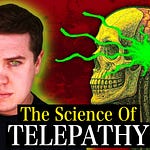Across the North American landscape lie thousands of burial mounds, which are earthen structures with shapes and alignments that suggest planning and astronomical knowledge beyond what is typically attributed to early Native cultures. From the stone walls at Fort Mountain to the lunar-aligned earthworks in Ohio, these monuments continue to raise questions about their origin and purpose.
The Moon-Eyed People and Fort Mountain
In Cherokee oral history, there are stories of a light-skinned group who could not tolerate sunlight and who built strange stone structures. These people were called the Moon-Eyed People. According to tradition, the Cherokee drove them out when they arrived in the Appalachian region.
Fort Mountain in Georgia is home to a zigzagging stone wall that stretches nearly 900 feet across the summit and measures up to 12 feet thick. There is no clear archaeological record linking it to the Cherokee or any known mound-building culture in the area. Early American records suggest that Chief Oconostota told pioneer John Sevier that the wall was built by white men who came from across the ocean. These men were described as being in the region long before Europeans.
Denisovans and the Genetic Clues
In 2010, scientists discovered a finger bone and large molars in Denisova Cave in Siberia. The teeth were so large that researchers initially thought they belonged to a bear. DNA testing confirmed they came from a distinct hominin group now known as the Denisovans.
Further discoveries on the Tibetan Plateau in 2019 revealed a jawbone with Denisovan DNA. The size and density of the bone suggested a robust human, much larger and more powerful than Homo sapiens or Neanderthals. Some researchers estimate they could have stood over seven feet tall.
Initially, Denisovan DNA was believed to exist only in Melanesian and Australasian populations, such as Papuans and Aboriginal Australians. However, a 2015 genetic study identified traces of Denisovan DNA in some Amazonian tribes. This was not a minor overlap. These populations carried a second source of Denisovan ancestry, unrelated to the known Siberian connection. The discovery suggested that a Denisovan-related group had crossed into the Americas far earlier than previously understood.
Consistent Stories Across Tribes
Multiple tribes across the Americas have similar stories of strange, tall, pale-skinned people who came before them. The Choctaw in the Mississippi Valley described the Nahullo, white-skinned giants who practiced cannibalism. When Europeans arrived, the Choctaw reportedly used the same name for them.
The Comanche told of ten-foot-tall giants who were eventually destroyed. The Navajo recalled the Starnake People, pale beings who mined the earth and enslaved others. The Paiute of Nevada described the Si-Te-Cah, red-haired cannibals who lived in Lovelock Cave. In the early 20th century, red hair and split bones were discovered during excavations of that cave.
Stories from Central and South America also describe gods or mysterious strangers who arrived from the sea. These figures were often credited with teaching building skills and introducing new technologies before disappearing.
Monumental Structures and Celestial Precision
In addition to oral history and genetic markers, physical monuments across the continent reflect a high degree of engineering skill. The Great Serpent Mound in Ohio is nearly 1,400 feet long. It features a spiral tail and a snake’s head that aligns with the summer solstice. The Newark Earthworks stretch across four square miles and track the moon’s 18.6-year cycle with accuracy that challenges modern surveyors.
Cahokia in Illinois once supported a population of over 20,000. Its central mound, known as Monks Mound, is larger at its base than the Great Pyramid of Giza. It was paired with a timber circle, often called Woodhenge, that marked seasonal solar events.
When early settlers asked Native informants who built these mounds, the answer was often the same. The builders were already gone when their ancestors arrived.
A Vanished Chapter
The cumulative evidence from oral traditions, genetic data, and monumental architecture suggests that another population may have existed in the Americas long before the ancestors of today’s Native Americans. This population is described in similar terms across vast distances and cultures. It is remembered as large, strange, and technologically capable. And in some cases, as dangerous.
Whether these people were Denisovans, a Denisovan-related group, or something else entirely remains uncertain. But the persistence of the stories, and the scientific evidence now backing parts of them, supports the idea that human history in the Americas is far older and more complex than we once thought.
Primary Sources
Mound Builders of Ancient America: The Archeology of a Myth by Robert Silverberg (mostly out of print but can still be found on used book website)
Secondary Sources
https://phys.org/news/2019-05-hominins-tibetan-plateau-denisovans.html
https://www.nationalgeographic.com/culture/article/151116-denisovan-human-anthropology-ancient-dna
https://dienekes.blogspot.com/2015/04/in-search-of-source-of-denisovan.html
https://www.sci.news/genetics/native-americans-lip-shape-gene-denisovans-09330.html
https://www.sciencenews.org/article/first-settlers-reached-americas-130000-years-ago-study-claims
https://www.sciencenews.org/article/first-settlers-reached-americas-130000-years-ago-study-claims
https://science.howstuffworks.com/science-vs-myth/strange-creatures/moon-eyed-people.htm
http://science.howstuffworks.com/science-vs-myth/strange-creatures/moon-eyed-people.htm
https://accessgenealogy.com/alabama/choctaw-traditions-council-fire-nahullo.htm
https://accessgenealogy.com/alabama/choctaw-traditions-council-fire-nahullo.htm
https://accessgenealogy.com/alabama/choctaw-traditions-council-fire-nahullo.htm
https://www.theatlantic.com/science/archive/2019/05/denisovan-jawbone-roof-world/588442/
https://phys.org/news/2015-11-dna-analysis-denisovan-molars-clues.html
https://www.medicinenet.com/who_has_denisovan_dna/article.htm
https://dna-explained.com/2013/12/26/native-americans-neanderthal-and-denisova-admixture/
https://popular-archaeology.com/article/ancient-human-crossed-ocean-barrier
https://www.latimes.com/science/sciencenow/la-sci-sn-americas-first-humans-20170426-story.html
https://www.latimes.com/science/sciencenow/la-sci-sn-americas-first-humans-20170426-story.html
https://popular-archaeology.com/article/ancient-human-crossed-ocean-barrier/









